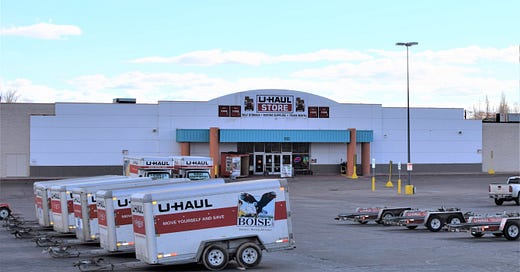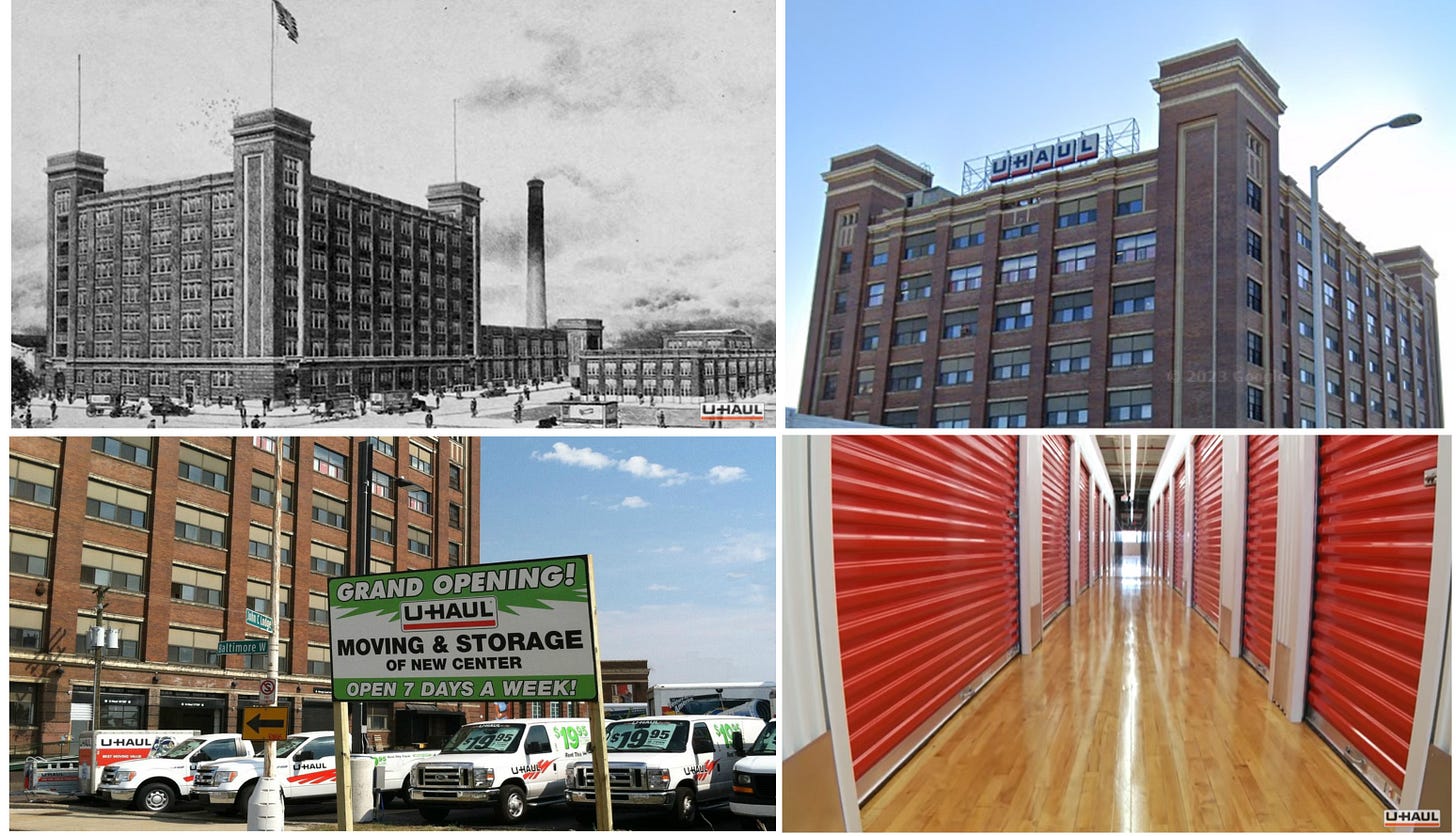Former Kmart Properties Have Fueled U-Haul's Adaptive Re-Use Strategy
Although known by many as the largest truck rental and moving company in North America – with its 200,000+ trucks and 20,000+ locations in the U.S. and Canada – U-Haul is also the 3rd largest U.S. self storage operator with approximately 78 MM square feet of self-storage space spread across nearly 900,000 units.
For over 50 years, U-Haul and its in-house AMERCO real estate development company have promoted a revitalization strategy aimed at buying and repurposing existing buildings to serve its moving and self-storage customers. U-Haul estimates that ~70% of its owned storage properties are the product of adaptive re-use.
While U-Haul has converted many types of buildings to storage properties, its most common re-use has been of former Kmart buildings.
In fact, to-date U-Haul has repurposed approximately 115 vacant former Kmart properties. That equates to over 12 MM square feet of former Kmart retail space that U-Haul has successfully adapted for re-use - and likely means that over 15% of U-Haul's current self-storage space is in former Kmart buildings.
U-Haul has completed Kmart adaptive re-use projects across the country, in cities as large as Phoenix, Arizona (population 1.6 MM) to towns as little as Manistee, Michigan (population 6,200).
What’s more, U-Haul’s corporate sustainability group measures the environmental impact – or better yet, the lack thereof – specific to its adaptive re-use projects and building conversions.
And the numbers are staggering.
For instance, U-Haul estimates that the repurpose of one of its newest conversions – a 138,000 square foot former Kmart in Fort Walton Beach, Florida that opened in January 2023 – resulted in the following (lack of) environmental impact:
Prevented 1,700 tons of metal manufacturing and transport (enough steel to make 1,741 cars);
Avoided approximately 6,200 tons of new concrete pours;
Kept over 8,000 tons of building and demolition debris out of landfills; and
Stopped 9.4 MM pounds of greenhouse gas emissions from entering the atmosphere (equivalent to the approximately one year’s worth of emissions from 722 SUVs).
And those estimates are from just one of U-Haul’s Kmart adaptive-reuse projects.
If you extrapolate across U-Haul’s 114 other Kmart conversions the numbers are even more amazing:
U-Haul's Kmart adaptive re-use projects may have prevented 1 MM+ tons of building debris from hitting landfills and have saved enough steel to produce approximately 200,000 vehicles!
And U-Haul's adaptive re-use success goes well beyond the repurpose of Kmart buildings.
In fact, 2023 marks 10 years since the opening of one of U-Haul’s signature adaptive re-use projects – the renovation of the former 250,000 square foot Nabisco bakery and factory in the New Center area of Detroit.
The landmark 1920 building was vacant and abandoned when U-Haul acquired it in 2012. But within a year U-Haul transformed the structure into a multi-story self-storage facility with 430 indoor climate-controlled units and covered drive-up loading and unloading docks.
Although the availability of former Kmart properties is now diminishing – in large part due to U-Haul's adaptive re-use success – U-Haul will likely continue to grow and take on revitalization projects in other types of vacant buildings and obsolescent properties across the country.








